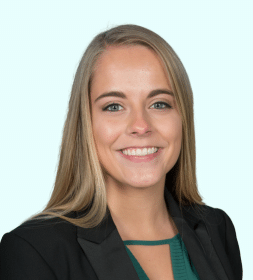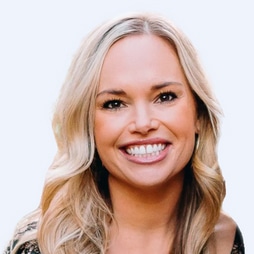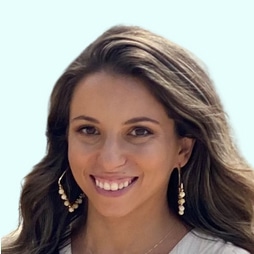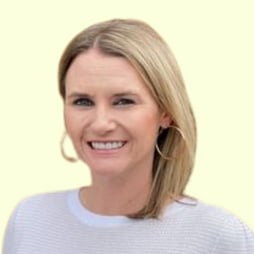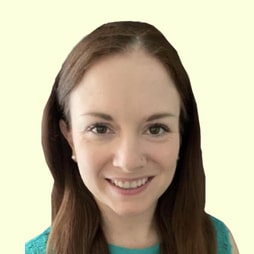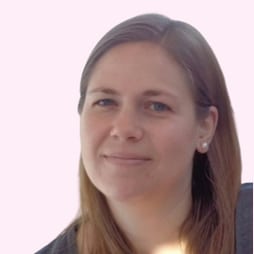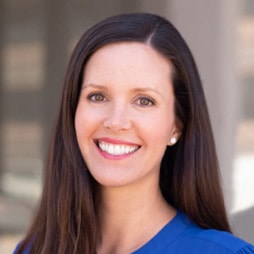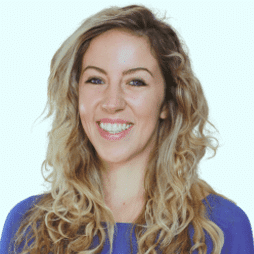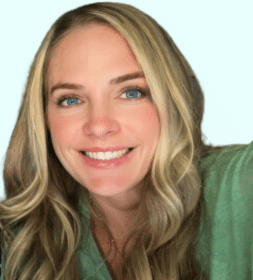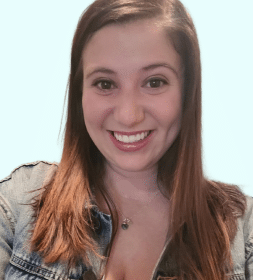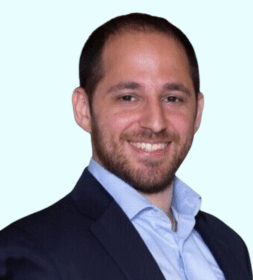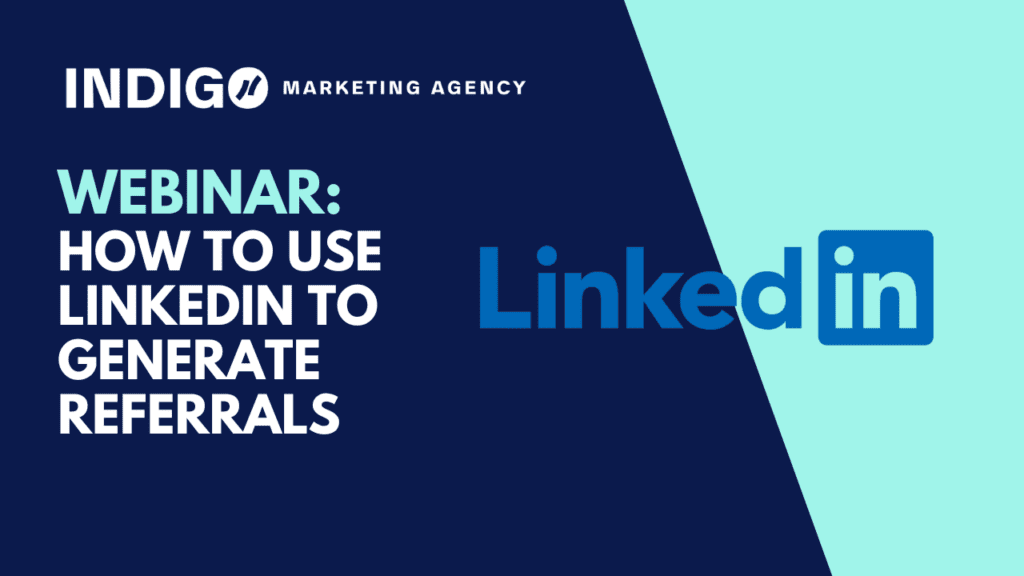
If you’re like most financial advisors, you understand that LinkedIn is a powerful way to find prospects, but you’re not sure how to use it.
On this exclusive webinar, I will teach you exactly what to do to get new prospects on LinkedIn. You will learn how to:
- Build and strengthen your network of connections
- Search for and qualify prospects
- Request to connect
- Follow up with your new connections
- Effectively generate referrals and introductions to ideal prospects (without “stalking” them!)
This webinar is only available this month, so don’t wait. Register today!
Meet Your Webinar Host
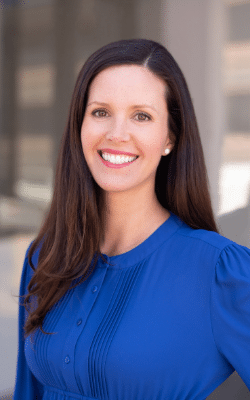
Claire Akin, MBA
Claire Akin runs Indigo Marketing Agency, a full-service marketing firm serving top independent financial advisors. She is a former Investment Advisor Representative and holds a Master’s Degree in Marketing. Claire works closely with several of Barron’s Top 100 Financial Advisors to grow their AUM using digital marketing.
READ THE TRANSCRIPT BELOW
Claire Akin:
Hi, and thank you so much for joining me for How to Use LinkedIn to Generate Referrals. I’m Claire Akin with Indigo Marketing Agency, and today we’re going to give you a step by step how-to guide for using LinkedIn to find qualified prospects, start a conversation with them and actually generate referrals using LinkedIn. To give you a little bit about my background, I’m a former investment advisor representative. I got into this business because my dad’s an investment advisor representative, and he started back in 1981 when he was with Linsco Private Ledger back when they called LPL Linsco Private Ledger, and he’s been in the business since 1981, and he’s really enjoyed his career, and he brought me into the business, and I love it. And so I’m really grateful for him, for that introduction into this amazing industry, where advisors like you help people to reach their goals and do really important work.
So I also have a bachelor’s degree in economics, a master’s degree in marketing. I worked for a company called FMG Suite, which is a leading provider of websites for financial advisors, before I started my own company, Indigo Marketing Agency, because so many advisors that I worked with asked me, “Can’t somebody do this for me? Can’t somebody take this off my plate? I want to outsource my marketing.” And so that’s why I created my company. Two years ago I wrote The LinkedIn Guide for Financial Advisors, which is available on Amazon now, and I also have The LinkedIn Course for Financial Advisors, an online self study how-to course.
So let’s talk about the difference that 25 years makes. So here’s me and my dad, and on the left you can see I was an angel in the school play when I was five, and on the right that was on my wedding day when I was 30. And so he has changed a lot and I’ve changed a lot in 25 years and it certainly has made a big difference. What else has changed in 25 years? Well, this is a visual representation of the internet, and so this is what it would look like if you mapped out all the connections. And it’s really changed everything from the way we communicate with our friends, to the way we find a restaurant, to the way we pay our bills. And especially it’s changed the way people find a trusted financial advisor, so we want to make sure that you’re adapting your marketing to work in an age where people’s eyes and ears are always on their phone.
So what we’re going to cover today is, what is LinkedIn? Why do you need it? How you can embrace a specialty on LinkedIn, and how you can actually prospect on LinkedIn to get new clients. So let’s get started.
First of all, what is LinkedIn? So LinkedIn is the world’s largest business networking social media site. And so there’s four main uses. Most people use it to find a job. About an equal percentage of people use it for recruiting and hiring, and then there’s also people of course using it for sales, and then for networking. So what information is on LinkedIn? Well, there’s more information about a person’s qualifications as an investor on LinkedIn than on any other social media platform, and that’s why it’s so valuable and so important to us. So it contains everything you would need to know to qualify a prospect. Where they work, their current position, who they know, where they used to work, where might they have a 401k to rollover from? Or maybe stock options that they might want to find a solution for? Their education, where they went to college, how old they are, their location, gender, hobbies, interests. All of this information is on their LinkedIn profile and it’s searchable, and so it’s very easy to find people who fit your target demographic by using LinkedIn.
Now, what is the problem that LinkedIn solves? Why was it created? Why is it valuable? Well, it’s interesting. In the old days, people used to find one job and stay at it for decades, if not at least years. And today, the average person who’s 30 years old has already had over five jobs. And so people are just moving from job to job much more quickly than they did in the old days, and the problem is that when you exchange business cards with somebody like you used to, that business card is rendered completely obsolete when somebody changes jobs. But LinkedIn is like a lifelong business card, so that you can keep connected with people no matter how many job changes they have and no matter how many job changes you have. So it’s your network that grows over time.
So why is LinkedIn important for financial advisors? Well, first of all, it’s your online resume. So it shows people your credentials, your expertise, your education. It’s also your online business card with your contact info, so if one of your clients refers you to one of their friends, that person can look you up and find your phone number and your email address. It’s also an up to date online Rolodex of your network, so of everyone you’ve ever connected with. It’s also an online search tool to find qualified prospects, and it’s just recently become a publishing platform that allows you to position yourself as a subject matter expert and share your expertise on LinkedIn, with the LinkedIn Pulse Publishing Platform.
So LinkedIn today has over 450 million users in 200 countries, and in the United States, it’s really active in the US, with more than 133 million users in the US. So one out of three professionals are members globally, and it’s the 14th most visited website in the world, which is incredible. So it’s really doing a ton of traffic, and it’s a great place to get exposure.
Now, a lot of advisors that I talk to say, “Well, LinkedIn’s great, but my prospects aren’t on there.” Well that depends. It depends on who your prospects are, of course, but just consider that the average LinkedIn user is 44 years old, so it’s not just millennials. Over 50% are college graduates. The average income is $109,000 and the average asset value is over $250,000, and 26% of ultra high net worth investors have a profile. So if you think through those kind of data points, you can see that affluent and wealthy investors are on LinkedIn. It’s not just for millennials, and so it’s an important platform to pay attention to.
The important part of creating your LinkedIn marketing campaign is really embracing a specialty. Nobody wants to be prospected on LinkedIn or have a sales call on LinkedIn for somebody who isn’t specialized. And so it’s really important to hone in on what you do, who you serve, and how it benefits them, and we want to make sure that we’re capturing this in all of your LinkedIn marketing campaigns, but especially in your LinkedIn headline, which is the first thing that people see about you.
And so here’s some examples of headlines that embrace a true specialty on LinkedIn. “Fee-only financial advisor helping business owners pursue true wealth.” That’s an advisor that helps business owners sell their business and take some chips off the table to kind of find balance in their lives. Here’s the second one, is, “A fiduciary wealth manager helping physicians catch up for retirement in a hurry.” He’s out of Albuquerque. He does a great job reaching out to doctors and dentists, and he helps them take advantage of some of the tax advantage saving vehicles to catch up for retirement, if you’re right within 10 years of retirement and you need to save a lot in a hurry. “A retirement advisor helping Intel employees secure income for life.” So this advisor is out of Portland and he does a great job serving only Intel employees. That’s what he does best and that’s what everybody knows that he does.
So let’s talk about when you’re creating your specialty on LinkedIn, let’s talk about the difference between minimum expectations and differentiation. We really want you to be different and we want to communicate what’s different about you, but a lot of advisors, when they go to write their headline and to differentiate themselves, all they’re doing is articulating minimum expectations.
So I’ll explain to you what I mean. So with an airline, the minimum expectations we have of an airline these days is to get you from point A to point B safely. Maybe they’ll get you there on time, and hopefully your bag will arrive too, but these are your minimum expectations. It doesn’t differentiate the airline, because we expect if we buy a ticket that all airlines will get us there safely.
What about a financial advisor? When somebody hires a financial advisor, they expect you to be experienced and credentialed. They expect you to be trustworthy, to have reasonable fees, and to act in their best interest. Otherwise, why would they hire you? So a lot of advisors I see are trying to differentiate themselves by using these minimum expectations, and it just doesn’t work. You really want to explain what’s different about you. So what makes you different? Southwest doesn’t have fees for baggage. They’re my favorite airline, and so that’s really what makes them different from the other airlines, which all charge you fees for bags. So who do you serve best and what makes you different? That’s really what you want to capture on LinkedIn, and those are the people that you want to go after with your LinkedIn prospecting campaign.
So to do that, let’s talk about your ideal client. So you’ll want to think through and define your ideal client. Consider your top five current clients. The ones that you absolutely love to work with and that you wish you could clone. Think about their employer, their job title, their income, their location, and their interests. Think about what they have in common, and kind of write down those criteria for your top five current clients, and see if any specialty or any patterns emerge.
And then once you’ve kind of identified your one or two ideal clients, let’s talk about identifying their most pressing need. So what’s the most important financial problem that they have? What’s the most common reason they come to you? What are the top 10 questions they ask you? What’s the most visited page on your website? This is a great way to figure out what’s important to people and why they’re hiring you, is what’s the most visited page on your site? And you can find that out through Google Analytics.
Why do clients say they chose to work with you? So take a poll of your top five clients and ask, “Why did you choose me instead of another advisor?” And that will often tell you what the most important differentiator is to your clients. And what’s their biggest fear? So are they worried about running out of money when they retire? Are they worried about dying without a succession plan for their business in place? Are they worried about their children spending their inheritance too quickly? What’s their biggest fear? That can give you a clue of the biggest problem that you solve for your clients.
So here’s some good examples of prospects’ most pressing needs. So this top one is actually from my dad’s website. People come to this page on a site that is, “Should I choose the UC San Diego 457 or 403(b) plan?” There are government institution, also an educational institution, so they have both, and people get really confused about that. So that’s a great piece that we created for him. “How can I maximize my Chevron benefits package? How can I prepare for the next round of Intel layoffs? How can I maximize my Social Security benefits as a divorced spouse? And how can I protect my same sex partner financially?” So these are all examples of really important concerns that prospects might have that you can answer.
So we’re going to take these important questions and we’re going to turn them into a prospecting campaign on LinkedIn using your specialty. So the process works like this: First, you’re going to search for and connect with qualified prospects, then you’re going to give them valuable information to address their most pressing need, and then you’re going to invite them to take the next step. So this is a repeatable process to get you new leads and clients every single month.
So first we’re going to create your bait that addresses their most pressing need. So this is an example from the Intel advisor that I spoke to you about. “Actions Intel Employees Should Take to Prepare For Downsizing.” And so this could be anything from a checklist that you have here, to a video, to a webinar, to a free report, or even maybe a free financial plan that you want to offer. Everyone who works at a certain employer. So the sky’s the limit with creating the type of content. You just want to make sure it’s really valuable to your audience and that you really give away 90% of what you know.
So this is a employer-based campaign that we did that is about How to Maximize Your Greenheck Benefits Package. Greenheck is a industrial fan company, and it’s out of Wisconsin, and it’s the largest employer in this advisor’s town, and so he aggressively targets the employees. And inside the report you can see we talk about their defined benefit plan, their 401K, paid time off, longterm disability insurance, life insurance, and also the employee stock option plan. And so we’re really giving away a lot of great information that’s extremely valuable to people that work at this company, and they follow up with specific questions about their own situation once they read the report.
Here’s another report example. A Social Security guide that’s pretty straightforward. This advisor works with certified registered nurse anesthetists, and so this is The CRNAs Investor’s Guide: Avoiding the Three Biggest Mistakes.” And so this is a totally targeted report for CRNAs. This is a webinar on Social Security, and so this is a good example. If your target demographic is within 10 years of claiming Social Security, this is a great kind of avenue to reach out to them.
So once you have your bait, you want to promote it on LinkedIn. So first you can publish it as a post, and this notifies everybody in your network that you’ve published a post, and it resides permanently on your profile where people can review it when they’re kind of browsing your profile. Then you can share it to all of your groups, and this will notify everybody in your group that you’ve shared your post. And so this is important, because people who are a part of your LinkedIn group, you may not be connected with already, but they’ll get an email alerting them to your publication within the group, and so it’s a great way to connect with people that you’re not already linked with on LinkedIn.
Then you can share your bait with daily updates on LinkedIn, and you can also ask your referral partners to share. So people who also serve clients in the same demographic, this valuable information is important to your prospects, and so your referral partners who also serve them are doing their clients a favor by sharing this report, and then of course people can follow up and ask you questions about it.
So let’s talk about sharing your bait with qualified prospects. So first of all, we want to find the qualified prospects, and then you send them a connection request, which is free to do on LinkedIn, and then we follow up with your bait or your message about your report. So let’s talk about how to do that. So first of all, you search for your qualified prospects, and you can search with company, job title, location, industry, past company, hobbies. So whatever your specific specialty is, that’s who you want to search for. And then you can even save your searches. And so here’s some examples of saved searches. “Financial advisors,” and this is in my account, so obviously I would want to reach out to financial advisors. “Executive equestrians.” I’m a big horse rider, and so that makes sense. And, “CEO’s who golf.” So this is just types of searches to give you some ideas of the types of searches you could create.
From there, you want to hit the big blue button next to their profile and send a request to connect with them. You’ll see about 25% to 35% of people who don’t know you will accept your connection request if you write a little message that goes along with it saying, “Hey, Thomas. I am an expert in helping Chevron employees make the most of their benefits package. I wanted to connect.” And 25% to 35% of cold people will connect with you. Once you connect with them, you can send them a message for free. And so you want to send a followup message thanking them for connecting and inviting them to take the next step. So here’s the ideal followup message. “Thank you for connecting. Here’s what I do, here’s how I can help. Here’s a relevant report that I think you’ll find valuable, and here’s a link to schedule a phone call if you have any questions.” So that’s kind of the ideal followup message.
And here’s an example that actually works for one of the advisors that I work with. “Hi, Thomas. Thanks for accepting my connection request. I’m an independent financial advisor that serves Greenheck employees and helps them prepare for a secure retirement. My firm specializes in Greenheck’s benefits package. We recently released a report. I’m happy to share if you’re interested. Do you need any help navigating your retirement plan?” And then he has his name, his phone number, and the link to the report.
People who download the report then get this followup email that says, “Greenheck employees save 50% on a retirement plan,” and so they can get started on their retirement plan. Once they’ve downloaded the report, they automatically get this followup email, and that’s really easy to set up using MailChimp or Constant Contact so that everyone that downloads your report gets nurtured and gets prompted to take the next step.
And so this process is really effective when you employ it on a regular basis, and here’s some ideas of the metrics that you can expect. So if you send 100 connection requests, like I said, you can expect 20 to 30 new connections, and this is great because these people remain your connections over time, so you’re growing your network and they’ll see everything that you post in the future. So even if they don’t take action with you now, they may take action with you at some time in the future. And then you send the followup messages to all 20 or 30 connections, you’ll get five to 10 responses, two to three people who actually have a question. So five to 10 people will say, “Thanks for the response,” or, “Thanks for the report.” You know, just kind of a thank you message. But two to three people on average will have a question or actually schedule an appointment. And from that, depending on your close rate, you can expect one new client.
So if you do this process every single month, you can expect to generate one new client each month from this targeted campaign. So it’s all about creating a repeatable process for your LinkedIn prospecting. I encourage you to set aside at least one hour per week to do this process, or delegate it to somebody on your team, or my favorite solution, outsource it. So I use a virtual assistant to send outbound connection requests to financial advisors on LinkedIn, and the total cost for 100 outbound messages, the 25 followup messages, and the one new client that I get each month from this is $25 to $30. And so by using a virtual assistant who maybe you pay them between $12 and $20 per hour, you can expect to get one new client from this for really a very minimal cost.
So create your repeatable process, adjust it over time to make it better, and make sure that you do it every single month. Of course you want to customize your strategy for your business and what works best for you, but this mechanism that I’ve described for you is definitely customizable and repeatable for any financial advisor out there.
So being successful on LinkedIn is a lot like diet and exercise. It doesn’t work overnight, but you have to be consistent and challenge yourself, and don’t quit. So challenge yourself to do six months of this process, and I guarantee you you’ll have success. I’ve followed up with a lot of advisors that use my process very successfully, and so I encourage you to give it a try.
If you’d like to learn more, you can get weekly marketing tips for financial advisors at indigomarketingagency.com/newsletter, and if you want to learn more about how to use LinkedIn, you can take the LinkedIn course for financial advisors, and here’s a synopsis of everything that we cover on the course. Here’s a couple of testimonials from advisors who have been really successful with the tactics used on the course, and you can take a look at indigomarketingagency.com/freecourse.
Also, if you’re more of a book person, this is The LinkedIn Guide for Financial Advisors, which is my top rated book available on Amazon. You can get it on Kindle or on paperback, and so check that out on Amazon. And if you want to see my weekly tips for financial advisers, connect with me on LinkedIn, and I share weekly posts on how advisors can improve their marketing.
CONTACT US
- 9437 S Santa Monica Blvd #207 Beverly Hills, CA 90210
- (619) 786-7787
Join our newsletter

Book A Call
Schedule Your FREE
Marketing strategy Call Now
- What your business has done in the past
- What is working for you and what is not
- How your marketing compares to top advisors
- Our custom recommendations for improving your marketing today
Introducing The New
Total Marketing Package
Now with tiers!
- Stand out in a competitive market
- Generate quality leads
- Make your marketing efforts more effective

GET $1000 OFF when you book your call today. Only until 4/30/2024
A born strategist, Jordan always starts with “why” when brainstorming marketing tactics with her financial advisor clients. With recommendations rooted in data and industry best practices, she loves growing advisors’ awareness of their strategies’ positive impact on their business.
Jordan obtained her bachelor’s degree in business administration (with an emphasis in marketing and management) and her master’s in communication and media management from Colorado State University. Before joining Indigo, Jordan already had 6+ years of financial services experience and 8+ years of marketing/project and campaign management experience under her belt—making her a powerhouse addition to the team! Outside of strategizing for her advisors, Jordan’s hobbies include pottery, hiking (when she’s in shape), and ordering delivery or takeout. She is happily married to her husband, Max, and a dedicated dog mom to her oversized golden retriever, Kai.
Anne Wheeler is responsible for a variety of administrative tasks as well as updating social media pages for clients. Anne enjoys the creative side of her position and the ability to collaborate with the team to help advisors get started with Indigo.
Anne holds a bachelor’s degree in communication from the University of Tennessee. Outside of work, she enjoys walking, baking, spending time with her husband, Rick (a structural engineer), and two sons, Thomas and Turner. Anne loves being a full-time mom, and appreciates that Indigo gives her the opportunity to work part-time while still caring for her boys.
Leading the Indigo team with heart, Hugo Fernandez is passionate about helping our financial advisors attract a flood of their A+ clients with sustainable marketing campaigns. He enjoys running companies that are wildly successful and wearing a black t-shirt every day of his life. When his two favorite things come together, you have an average day at Indigo.
Hugo Fernandez is also CEO of Indigo’s partner company, Just Digital, and author of The Client Acquisition Blueprint. He has personally helped hundreds of entrepreneurs grow their business through his proven blueprint for creating an EPIC marketing strategy and online presence.
Kelli McLeod plays an integral role at Indigo while overseeing the Account Services Team, providing customer service, getting financial advisors onboarded and in serving as their primary point of contact during that process. Her team looks to her for her leadership and decision-making abilities For Kelli, the most rewarding part of this role is working with clients one-on-one to ensure they’re happy and that their needs are met.
Kelli has a bachelor’s degree in communications and public relations from Pacific Lutheran University. More recently, she’s done extensive work in the corporate housing and property management industries.
Kelli currently lives in Colorado Springs, Colorado, with her husband, Ian, who is an officer in the U.S. Army, and their two sons, Zachary and Cameron. When she’s not working, you can find her running or hiking, attending group fitness classes, and cooking. Kelli’s also an avid book club enthusiast, so be sure to reach out to her if you’re looking for a new read.
Sara Dressler manages all systems and operating processes while overseeing several departments. Sara is responsible for supervising many activities within Indigo and identifying areas of improvement to better meet company goals. She functions as the bridge connecting management to every department.
Sara has a bachelor’s degree in business administration and a minor in communications from Pacific Lutheran University. She leverages this degree, along with her years of experience as a virtual assistant, to keep our company running like a well-oiled machine. Sara is happiest when spending time with her family. Her three young boys and life as a military spouse keep her busy, but she wouldn’t trade it for the world. She lives an active lifestyle and loves working out, getting outside, and watching sports with her family (whether it’s on TV, at her kids’ games, or in the backyard).
Elizabeth Reider is a woman of many talents. She spent 10 years as a Chief Marketing Officer for a top-level independent financial advisor, and since her entry into financial services, she has networked and become friends with many advisors. Elizabeth admires their empathy, knowledge, and passion for their work, and has seen how independent advisors are more than professionals providing investment and planning advice; they are trusted confidants, life coaches, and guides. Over time, they become a part of their clients’ extended family—and she loves coming alongside that. (Check out this video to hear directly from Elizabeth about why she loves working with financial advisors.)
As Director of Marketing, Elizabeth helps get the word out about how partnering with Indigo can take an advisor’s marketing to the next level and beyond to grow their business and increase their productivity.
Elizabeth earned her bachelor’s degree in management information systems from the University of South Florida Muma College of Business. She also holds a life, health, and variable annuity license, which gives her a special understanding of the many products and services advisors offer. Originally from Clearwater, FL, Elizabeth loves to travel and has visited 12 countries, including extended visits to eSwatini, Africa, to visit family and assist with humanitarian relief programs. She has seen firsthand how independent financial advisors are providing advice to their clients that outpours into the lives of their own families, staff, community, and sometimes across the globe. When she’s not working, Elizabeth enjoys attending orchestral and theater productions with her husband, David, and taking their son, Julian, to art museums, as well as family evenings in the backyard playing baseball with her son and shih-tzu poodle, Wrigley. She is also an active participant in overseas humanitarian work—using her skills to make a difference in the lives of others.
It’s Katie Cress’s mission to help financial advisors reach their ideal prospects through custom digital marketing. On any given day, you can find Katie meeting with new financial advisors to learn more about their marketing goals, who they love working with, and why they’re passionate about helping others. Her favorite part of her job is meeting new advisors every day and continuing to learn how each firm and individual advisor is different, and using her marketing and small business background to help them craft a game plan that empowers them to grow their business and enhance their services. Often described by loved ones as a “helper” and “caretaker,” Katie is passionate about advocating for her advisors’ needs and supporting her coworkers to help them succeed.
Katie holds an MBA from Xavier University and a BA in Economics from Ohio University. A Midwest girl for life, she lives in Cincinnati, Ohio, with her husband, Brandon (who’s also a marketing guru), and their three kids, Charli, Lucy, and Teddy. She and her husband also own Clean Eatz Cafe, where they use their collective marketing prowess and love of food to create a welcoming space for employees and hungry customers alike. Katie is passionate about and for small business owners, being raised by her father who was an entrepreneur, being one herself with her husband, and working with them every day at Indigo. She loves the spirit, creativity, and drive of entrepreneurs. When Katie’s not working or helping run the family business, she enjoys working out with her husband at Orange Theory, loving on her three kids, and cooking delicious food.
Lori Koepke plays a major role as a liaison between Indigo Marketing Agency and its wonderful clients. She works directly with our advisor clients on their marketing strategies, marketing calendars, article creation, editing processes, compliance approvals, deployment of their content, and more. Lori enjoys helping strategize and be a support to her clients, and loves the camaraderie among the Indigo team members.
Before joining the Indigo team, Lori was a schoolteacher for 10 years. She has a Master of Education and Bachelor of Arts in Elementary Education from Concordia University in Portland, OR. She was born and raised in Vancouver, B.C., and lived in Vancouver, WA, for 25 years before moving to Boise, Idaho, where she currently resides with her husband, Jeremy, and four wonderful kids, Sophie, Tanner, Jonas, and Violet. In her free time, you can find Lori reading, watching football, and driving her kids to all their activities.
Watch this video to hear why Lori loves working with Indigo.
Heidi Wilson thrives on helping advisors create an online voice and streamline their marketing efforts. With her mother being a retired financial advisor and her brother-in-law currently a CFP® professional, she’s passionate about taking the marketing pressure off of advisors so they are able to focus on their clients. She loves when advisors tell her something we did for them helped; it can be as simple as taking something off their very busy plate or helping them land a new client with one of the articles we wrote. With broad-based consumer and B2B marketing experience, Heidi is constantly thinking outside the box and brings a fresh perspective to the Indigo team.
Heidi holds a bachelor’s degree in public relations from Florida State University and hails from Tampa, Florida. Her husband, Chris, is in the U.S. Army, and as they are constantly moving, they take every opportunity to explore the new areas where they’re living. Some of their favorite places they’ve called home include Hawaii and New Orleans. Heidi is thankful for the opportunity to work remotely with Indigo, which allows her to take her job with her, no matter where the Army moves her family next.
Watch this video to hear why Heidi loves working with Indigo.
Jillian Segrue acts as a liaison between clients and the Indigo team, using her 12 years of customer service experience in fields such as healthcare, financial services, and risk management to help hone their message and deploy it effectively and efficiently. Jillian enjoys building unique relationships with each of her clients as she uniquely helps them reach their ideal target audience.
Jillian has a bachelor’s degree in healthcare administration and a minor in business administration from SUNY Brockport. Originally from Rochester, NY, she currently lives in Columbus, GA, with her husband, Tim (an Army captain), daughter, Macie, son, Henry, and two cats. As a military spouse, Jillian appreciates the flexibility Indigo provides—allowing her to juggle motherhood and excelling in her career—and its unmatched positive, supportive, and uplifting company culture. In her free time, Jillian loves to read, shop, and go running outdoors (just not in the Georgia heat!).
Amanda Laskey works with clients one-on-one to develop and implement marketing strategies that help spread the word about who they are and how they help. In her role, Amanda strives to deliver outstanding customer service to our clients. She is tech-savvy, an independent problem-solver, extremely organized, an excellent communicator, and thrives on helping others. She appreciates the ability to work remotely in a collaborative team environment while supporting her family.
Amanda holds a Bachelor of Arts in Education and a Master of Arts in Inclusive Education from Seton Hill University and has over 10 years of experience in secondary classroom teaching and over 3 years as an Executive Assistant. A proud Army spouse, Amanda resides in Pittsburgh, PA, with her husband, Brandon, their two sons, Jackson and Harrison, and their sheepadoodle, Waylon, and goldendoodle, Cash. Outside of work, Amanda enjoys spending time with her family, relaxing at the beach, traveling to new places, dessert, and all things Disney.
Beverly Anderson is the go-to contact point for advisors to create a targeted and cohesive marketing strategy that is unique to their specific goals. She loves seeing her clients experience positive results from their marketing efforts, and as a world traveler, she appreciates the ability to work remotely and connect with clients from any country.
Beverly holds a Bachelor of Science in Business Administration from Oregon State University. In addition to traveling, she enjoys making music as a singer/songwriter and anything outdoors (she’s an avid snowboarder and rock climber). She and her partner have a rescue pup, Toro, a former street dog in Cabo, Mexico, before they adopted him. Beverly has three older sisters, with whom she is very close, and they all, along with her mother, live in the Portland area. Although she spent the first half of her childhood in Fountain Hills, Arizona, Beverly considers Portland to be home.
Watch this video to hear why Beverly loves working with Indigo.
Kasey Yhap’s commitment to her clients is the driving force behind her work. Her diverse educational background (a bachelor’s and master’s degree in vocal performance from the Peabody Conservatory of Music and a master’s degree in communications from Syracuse University) has equipped her with the unique skill set required for success. Kasey’s strong communication skills and creative mindset, combined with her passion for helping her clients, make her a valuable asset to the team.
In her free time, Kasey stays active and maintains a healthy lifestyle through yoga, CrossFit, and spending time outdoors. These hobbies complement her professional life by allowing her to recharge and bring new ideas to her work at Indigo.
Dan Corcoran enjoys being on the front lines of financial advisor marketing, working directly with advisors to help them build a strong marketing plan to get their firm’s message out. Working remotely can be a challenge as talking to others, brainstorming, and sharing experiences recharges him; he maximizes touchpoints to connect with others to make every day at Indigo rewarding.
Dan holds a bachelor’s degree in journalism and mass communication from the University of Wisconsin-Madison. He enjoys drone photography and videography (he owns his own drone business, Forward Focus Photography), sports broadcasting (he was a hockey broadcaster for four years prior to COVID), spending time with family, camping/hiking, running, swimming, and road biking.
Originally from Sun Prairie, WI, Dan has three siblings, and prior to joining Indigo’s team, he worked for an RIA in Madison for two years.
Jennifer Farrior is Indigo’s go-to for all things proofreading and editing. Her attention to detail is unmatched, and she takes pride in making sure every article is clean and concise before it heads out to our financial advisors. She says, “Even a single typo can affect an advisor’s credibility, and we strive for perfection when it comes to how they’re presented online.” As Lead Writer, Jennifer trains and manages the team of writers, and also writes and collaborates with team members to create Indigo’s blog posts and promotional material.
Jennifer holds a bachelor’s degree in English from UCLA. In addition to her role at Indigo, she runs her own copy editing and proofreading business, She Proofreads LLC. Jennifer hails from San Diego, California, but now lives in Louisville, Kentucky, with her three kids, Joshua, Julia, and Joel, and goldendoodle, Dexter. She loves working at Indigo because it provides her with the income, flexibility, and the community she needs as a stay-at-home mom. Outside of work, you can find her spending time with her kids, friends, boyfriend, or working on a puzzle while watching Netflix.
Lisa Gaines spends her work days uploading blog posts to our clients’ websites and LinkedIn profiles, drafting emails, and making adjustments to content as advisors request. Lisa has learned a lot as a long-time member of the Indigo family and has enjoyed seeing the processes evolve to become more streamlined and efficient over time. And she loves working with the amazing Indigo team!
Lisa is a proud alum of Texas A&M University, where she received a Bachelor of Business Administration in Finance. As a military child, Lisa feels as though she grew up everywhere; however, she claims central Texas as home where most of her family is originally from. She currently lives in Fort Hood, Texas, with her husband, Korey (an active-duty Army officer), and two kids, Madelyne and Jameson. As a military family, Lisa moves quite a bit—often to areas where the job market is small. She loves that Indigo provides her with a steady job she can take with her wherever she goes. When she’s not working, Lisa enjoys dabbling in interior design, binging a good Netflix series, and spending time with friends and family.
Read more about why Lisa loves working with Indigo.
Joining the Indigo team after more than eight years of experience working with advisory and fintech firms, Andrea is passionate about helping advisors across the country use digital marketing strategies to grow their business in innovative and effective ways. She holds a bachelor’s degree in business administration from Berkeley College in New York.
Originally from Guyana, South America, Andrea now lives in the Long Island, NY, area with her husband, beautiful daughter, Sophia, and their puggle, Rex. When she’s not tackling her marketing duties, Andrea enjoys practicing yoga, taking long walks, watching thriller movies, and spending time outdoors with her family. An animal lover (specifically dogs), she spends time raising funds or supplies for shelters when she can.
Sarah Robichaud uses her love of spreadsheets to create engaging content calendars for our clients’ social media pages. Sarah holds a bachelor’s degree in psychology from Salisbury University and a master’s degree in marriage and family counseling from Liberty University. In addition to her role at Indigo, Sarah volunteers as a virtual administrator for Army Wife Network, a nonprofit organization that aims to empower and educate military spouses through blogs, podcasts, and various other resources.
Born and raised in Maryland, Sarah currently lives in Rochester Hills, Michigan, with her husband, Andrew, two children, Emily and Logan, and two fur babies, Penny and Chewbacca. As a military spouse and mother, Sarah loves working for Indigo because of the flexibility it affords her, allowing her to continue to build her career while frequently relocating around the globe and working on her own schedule to accommodate a busy lifestyle. Sarah also loves Indigo’s supportive team atmosphere. Outside of work and volunteering, you can find Sarah enjoying time outdoors with her family, typically running, camping, or traveling. An avid traveler, she’s visited 16 countries and is always planning her family’s next great adventure.
As a natural problem-solver, Peter Wardenaar uses his skills to help financial advisors find new ways to grow their site traffic and attract more clients they love. Peter enjoys the dynamic nature of his role; the challenges are never the same as every situation is unique and requires a different approach. But don’t let Peter’s technical prowess fool you—he also has quite the creative side! Before joining the Indigo team, he worked as a first-grade teacher and university English professor in Cali, Colombia.
Peter has bachelor’s degrees in education and in music from Portland Bible College and a master’s degree in music production and technology from Berklee College of Music. In his spare time, he loves writing and recording music, graphic design, engaging with people, and studying leadership and theology. Peter is also one of the most well-traveled people you’ll ever meet! He was born and raised in the Netherlands but lived in the Pacific Northwest for over 12 years. Today, he resides in Cali, Colombia, with his wife, Gloria Isabel, and their three kids, Emanuel, Paloma, and Violet.
Kourtney Kearney is a data-driven woman with a knack for coding. On any typical day, you can find her building web pages, troubleshooting bugs in code, and setting up automations to make life easier for our clients. Thanks to her technical background, Kourtney has a vast understanding of the inner workings of websites and the data associated with them. She’s always on the lookout for new technology that will help us improve our workflows so we can focus on what we do best—helping financial advisors grow their business. Kourtney enjoys the variation of tasks and loves the challenge of taking an existing website and making it better without completely rebuilding it.
Kourtney is originally from Newark, CA (Bay Area), but currently resides in Antelope, a suburb of Sacramento, and holds a Bachelor of Arts in Art History and Curatorial Studies. Outside of work, Kourtney spends her free time reading, playing volleyball, baking with her two sons, and hanging out with family.
Adrian Bachini works on tasks requiring technical knowledge and other various administrative tasks. A software developer by day, prior to joining Indigo, Adrian had very little knowledge on how nontechnical positions operate. His position at Indigo allows him to both learn and experience a variety of platforms and gain more knowledge about how to maximize marketing initiatives.
Adrian holds a bachelor’s degree in computer science with a specialization in software technology from De La Salle University Manila. Adrian considers himself somewhat of a workaholic, with a full-time day job in addition to working with Indigo. When he’s not working, he enjoys watching documentaries, action movies, and anime, and also loves cycling on muddy downhill trails or cross-country rides, playing video games, and simply resting when he can. He is also a licensed commercial pilot and flies in his free time; he obviously also enjoys traveling. Adrian lives with his family and more than a few pets (11 dogs, 6 cats, a few birds, and fish)—he has more pets than humans in his home!
Adriana Escalante thrives on creating an online representation that looks and feels true to our financial advisor clients as she builds their websites to best represent them and their businesses. Her experience working on travel and tourism websites motivates her to make sure every site she works on is exciting and engaging to web visitors. A graduate of University of Texas in Austin, Adriana double-majored in International Relations and a Liberal Arts program called Plan II. She also received a certification for front-end development from a coding academy in Austin, which has equipped her to serve as a great liaison between developers and clients.
After living in Austin, TX, for most of her adult life, Adriana now resides in San Antonio, TX (a city with a ton of history and many things to do), with her partner, Russell, and their dog, Abbey. She also has a brother and sister with whom she’s very close and tries to see a few times a year. Most of Adriana’s hobbies revolve around nature. She grew up spending lots of time on a sailboat or at a beach, and her family has a small cabin in Creede, CO, where she spends half the year hiking, camping, skiing, or snowshoeing (depending on the season). When she’s in Texas, she tries to get out most weekends to kayak. A Texas Master Naturalist, Adriana loves learning about all the plants, birds, and animals in her home state. She also dabbles in making stained-glass suncatchers!
Kaitlin Thornal helps clients onboard as they begin their marketing journey with Indigo, and she loves meeting new people and learning new things. She holds a Bachelor of Arts in Journalism and Mass Communication/Public Relations, International Studies, and a minor in French from the University of North Carolina at Chapel Hill, as well as a Master of Arts in Communication and Leadership Studies from Gonzaga University.
Kaitlin was born at Fort Lewis, Washington, but she moved around a lot growing up, spending the most time in North Carolina. She now resides in Fort Moore, Georgia, with her husband, Mason, and their four children, Caroline, Mason, Jack, and Bo. Kaitlin’s favorite place to live has been Europe (Italy, Ireland, and Belgium) and she would go back in a heartbeat! In her spare time, she enjoys long-distance running, reading, and spending time in the mountains of western North Carolina.
In her integral role, Samantha Triglia schedules social media posts, deploys email campaigns, and updates Google Business Profile pages for clients’ new blog posts. She also assists with lead generation/tracking and other administrative tasks. Helping out wherever she’s needed, Samantha appreciates the opportunities she has to learn and grow in her position. She says, “I love being a part of the team, especially when content deployment involves many moving parts and collaboration to get done and ready to go.”
A former teacher for 14 years, Samantha holds a Bachelor of Arts in Childhood Education from St. Francis College in Brooklyn, New York. She also holds a Master of Arts in Middle School Earth Science Education from CUNY Brooklyn College and a Master of Science in Educational Administration and Leadership from the University of Scranton. (Yes, TWO master’s degrees!) While in college, Samantha was the assistant to the Chief Compliance Officer of a brokerage firm on Madison Avenue in New York City for high-net-worth individuals and families, so she’s quite familiar with the types of clients Indigo serves.
Born and raised in Brooklyn, Samantha currently lives in Rockaway Beach in Queens, New York (the place the Ramones song is about!), with her husband, Matt (a Navy veteran and currently a New York City Firefighter), and their three sons, Matthew, Thomas, and James. Outside of work, Samantha enjoys spending time with her family riding bikes on their neighborhood boardwalk and going to the beach. They love to travel, including yearly family trips to Hershey, Pennsylvania, and Universal Studios in Florida (they’re big Harry Potter fans!). Samantha also stays active exercising and playing on a women’s softball team and a co-ed beach volleyball team with her husband.
Amanda wears a few hats at Indigo, bringing value to the team by creating custom social media posts for advisors, assisting with the onboarding process of new team members, and tackling behind-the-scenes team tasks. She loves to collaborate with our amazing clients and supportive team members.
Born and raised in Fort Myers, Florida, Amanda holds a bachelor’s degree in English Literature from the University of Central Florida and a master’s degree in education from North Carolina State University. She worked as an educator for about a decade before pivoting to a career in writing and marketing. A Space Force military spouse (former army), Amanda and her husband, Michael, are currently located in Colorado Springs, Colorado, with their two children, Mikayla and William, and two fur babies (a cat and a dog). When she’s not reading or writing fiction in her spare time, Amanda enjoys hanging out with family, hiking, trying new foods, and traveling.
A marketer at heart, Adam finds satisfaction when consulting, strategizing, and implementing strategies to improve his clients’ business. He specializes in organic and paid social campaigns, as well as email and SEO optimization.
Adam holds a bachelor’s degree in philosophy from the University of Central Florida and a Juris Doctor degree from Thomas Jefferson School of Law. Raised in Boca Raton, Florida, by his mom (an event planner) and dad (a private boat charter captain), Adam currently lives in Astoria, New York, with his wife, Olivia, who works in pet care. When he’s not cooking up killer marketing strategies, he enjoys role-playing games, Brazilian jiu-jitsu, and reading non-fiction and philosophy books.
With her marketing expertise, Melanie Valdez leaves no stone unturned when helping clients hone their marketing strategy. She loves interacting with clients and brainstorming new ideas to enhance their marketing results. No two days are ever the same, and that’s the way Melanie likes it!
Melanie holds a bachelor’s degree in psychology from Western Washington University as well as an MBA from Western Governors University. When she’s not rocking her role at Indigo, she enjoys cooking (trying out new recipes every week), painting, and discovering new restaurants with friends. She and her husband, Dat, love to travel and go on walks with their dog, Brutus, a pomeranian-chihuahua whose personality is definitely not proportionate to his small size!
Joshua spends his days developing client websites, implementing automations, and troubleshooting website issues. He enjoys the challenge of working with websites while simultaneously learning new tips and tricks to optimize them for maximum efficiency.
Originally from Pulupandan, Negros Occidental, Philippines, Joshua holds a Bachelor of Science in Information Technology, and in his free time enjoys playing computer games and watching anime and movies.
Hugo Fernandez acquired ownership of Indigo Marketing Agency from founder Claire Akin in 2022. Leading the Indigo team with heart, Hugo is passionate about helping our financial advisors attract a flood of their A+ clients with sustainable marketing campaigns. He enjoys running companies that are wildly successful and wearing a black t-shirt every day of his life. When his two favorite things come together, you have an average day at Indigo.
Hugo Fernandez is also CEO of Indigo’s partner company, Just Digital, and author of The Client Acquisition Blueprint. He has personally helped hundreds of entrepreneurs grow their businesses through his proven blueprint for creating an EPIC marketing strategy and online presence.
To get in touch with Hugo, email him or connect with him on LinkedIn.

